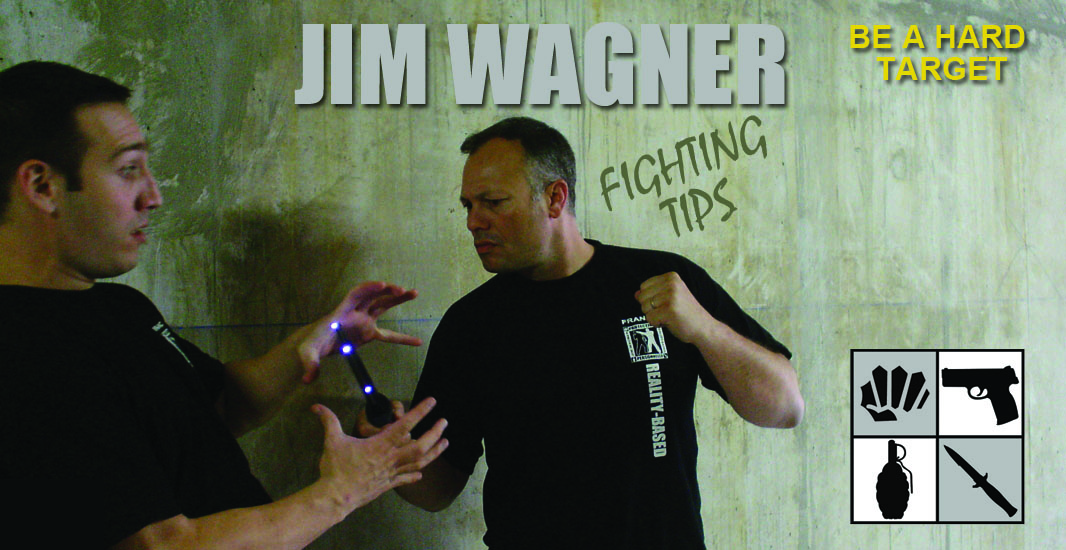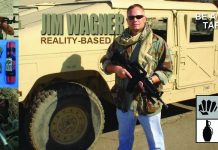After you have experienced a real-life self-defense situation, win or lose, you will want justice. You’ll want the perpetrator arrested and prosecuted. This is human nature. Of course, the proper venue to bring about justice is through the law enforcement and justice systems. Therefore your training should include the eventuality of coming into contact with these two systems.
In any conflict there are three distinct phases: pre-crisis phase (before the fight), crisis phase (during the fight), and the post-crisis phase (after the fight). Any good reality-based martial arts training program will include dealing with law enforcement and the judicial system, which falls into the post-crisis phase category. Although there are many subsections under this category (in past issues I’ve covered a few of them: self first aid, identifying the suspect, making a citizen’s arrest, post-crisis management) in this issue we will focus on identification and preservation of evidence.
Definition of evidence
The exact meaning of the word evidence is “proof.” There are two types of proof, evidence and physical evidence. Evidence includes personal testimonies, writings, or other things presented to the senses (graphs, charts, diagrams, etc.). Physical evidence is any and all physical objects or recorded observations and measurements of events (tape recordings, videos, receipts, etc.).
Identification and preservation
Whenever a crime occurs (when objects or persons come into contact with one another) there is a transfer of materials. This transfer can be one way where the criminal leaves materials behind, or it can be two ways where items in the crime scene may affect the criminal. Materials that can be transferred in a fight include blood splatters, strands of hair, skin cells, clothing fibers, wood splinters from a baseball bat, paint chips from a hammer, gun powder residue from a shooting, or even semen in the case of sexual assaults.
After the fight is over it is imperative that you protect the transfer materials, and the exact location where it occurred; also known as the “crime scene.” The most important thing in preservation is not to touch anything, or permit anyone else to tamper with anything that can be evidence. For example, if you’ve got blood on yourself you may be tempted to wash it off prior to the police arriving because it feels disgusting, but don’t. When the police arrive they will want to document the event. This is accomplished through the police officer’s own observations and through photographs taken by Crime Scenes Investigations. If the suspect happens to get their blood onto you, you’ll definitely want to preserve it. A sample of the suspect’s blood (microscopic evidence) can link the person to the crime through DNA testing. One mistake that many rape victims do before reporting this heinous crime is to shower. Needless to say, evidence that can possibly put the suspect behind bars literally goes down the drain.
You never want to touch or move objects (unless leaving the object is an immediate risk to you or others). You would never want to pick up a weapon that the suspect has left behind. If you do so, you run the risk of destroying valuable fingerprints, having human sent rubbed off (which can sometimes be tracked by bloodhound dogs), a single strand of hair flying away, or any number of possibilities. If you are in inclement weather, you can throw a box or cover over the weapon or object in order to protect it from the elements.
While you are waiting for the police to arrive you do not want to smoke in the crime scene – especially indoors. Smoking can affect the evidence in some cases.
While waiting for the police, mentally note (or write it down if possible) any movement that had taken place in the crime scene (reconstruct in your mind the exact events). Plus, take note of who has come in and out of the crime scene since the cessation of hostilities (the route people came in, and the route that they left). This is information that the police will definitely want.
Even though a Crime Scene Investigator (CSI) will collect and examine all of the evidence, you must always keep in mind that whatever you tell the police or the courts will also be considered evidence. Therefore always tell the truth, be detailed and accurate in your recollection, and get a copy of the report when it is finished. You have a right to the report (under the Public Information Act) in most instances, and it will refresh your memory when the trial takes place, months or years down the road. Remember that memory fails with time.
Don’t be disappointed
As a police officer I have gone to many crime scenes, and the victims were disappointed to find out that I had no intention of collecting finger prints, blood samples, etc. The reason I didn’t “do the works” many times was because it was a minor incident in the eyes of the law (although that certainly did not diminish or invalidate the emotions of the victims). If you end up in a simple bar fight where you get a bloody nose, at best you will get a photograph taken of it and a police report. If you know who the suspect is, or can point us to him, great, we’ll do our duty and go look for him. But, if there is little change of finding him, don’t expect a manhunt – because it’s not going to happen.
On the other hand, collection of evidence is almost always going to occur in serious crimes – robbery, attempted murder, rape or attempted rape, assault with a deadly weapon, etc. If you end up in this category, then all the mentioned rules will apply to you.
The training environment
It is very easy to include evidence identification and preservation into your training from time to time. One method you can use is to dab boxing gloves into a little stage blood (bought at a theatrical supply store or homemade with a little corn starch and red food coloring). Then, after the sparring match or scenario training students will look for and identify any “blood” transfer on them.
Another effective training method to get students use to thinking evidence is to have sparring matches or scenarios where the “suspect” drops a knife or gun (rubber training weapons) and the student is required to preserve the crime scene and makes a simulated call to the police. When the “police” (a fellow student) arrives, the student describes what had happened and where all possible evidence is located. Of course, the more elaborate your “stage” the better the learning curve.




